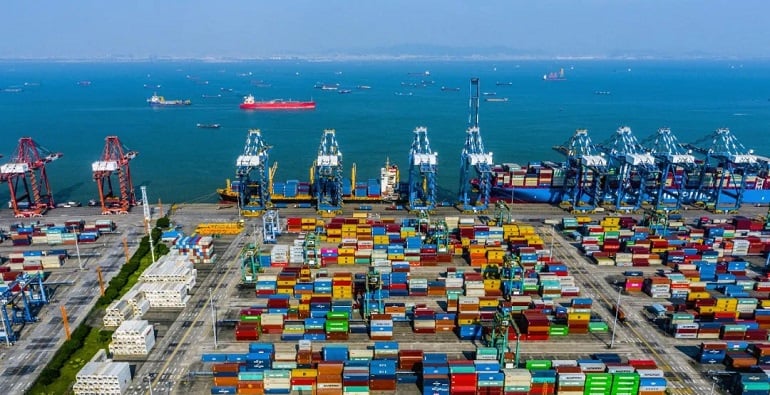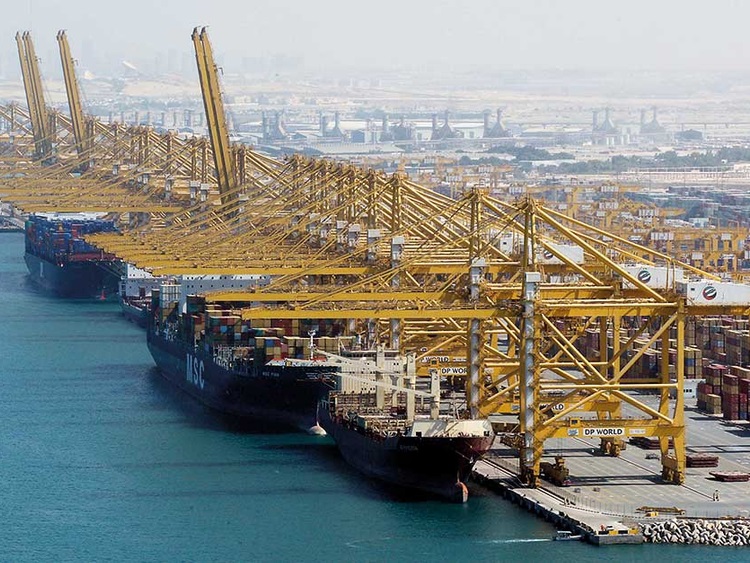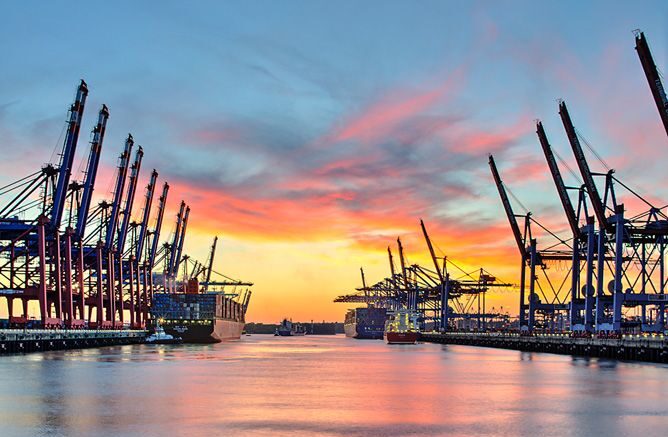- By TOP CHINA FREIGHT
- August 13, 2025
- Uncategorized
The largest shipping ports in the world are far more than just harbors; they are massive, high-tech logistics hubs that keep global commerce flowing. Every day, thousands of vessels arrive and depart from these ports, carrying everything from raw materials and machinery to electronics and fresh produce.Modern maritime transportation relies heavily on these ports for efficiency, safety, and cost control. Without them, the smooth flow of goods between continents would slow dramatically, disrupting industries and economies. Each of these ports not only handles enormous cargo volumes but also connects seamlessly with road, rail, and sometimes even air transportation networks, ensuring goods reach their final destinations quickly.

1.Why the Largest Shipping Ports in the World Matter
Handling imports and exports for nations.
Connecting sea freight to rail, trucking, and inland waterways.
Large ports achieve economies of scale that lower freight rates.
Shorter transit times and faster cargo clearance.
2.Port of Shanghai, China

The Port of Shanghai is not only the busiest but also the most technologically advanced among the largest shipping ports in the world. Located at the confluence of the Yangtze River and the East China Sea, it manages over 40 million TEUs annually.
Its container terminals are equipped with automated cranes and AI-based logistics systems, significantly improving cargo handling speed. The port’s deep-water berths allow it to receive the largest container ships in the world. Road and rail networks extend directly into the port area, ensuring inland transportation efficiency.
3.Port of Singapore, Singapore

Singapore’s port has a history of being one of the most reliable maritime hubs. Positioned along the vital Malacca Strait, it connects major East-West shipping routes. Known for its rapid vessel turnaround, it handles more than 37 million TEUs annually.
Its transportation links include expressway access to the airport and a well-developed rail network, making it an ideal transshipment point for time-sensitive cargo. The port also plays a key role in refueling vessels due to its status as the world’s largest bunkering hub.
4.Port of Ningbo-Zhoushan, China

A deep-water port with exceptional cargo-handling capabilities, Ningbo-Zhoushan handles over 33 million TEUs annually. It connects China’s industrial heartland to international markets and specializes in both containerized and bulk cargo.
The port’s infrastructure is seamlessly integrated with high-speed rail and express highways, allowing for smooth cargo transfer between sea and land transportation systems.
5.Port of Shenzhen, China

For international road freight within Europe and beyond, the CMR document sets forth the carriage contract terms based on the CMR Convention.
6.Port of Busan, South Korea

Busan is South Korea’s principal gateway for international trade, managing over 22 million TEUs each year. It connects Asia with the U.S., Europe, and the Middle East.
The port’s container terminals are supported by an integrated rail network that allows cargo to be moved quickly to industrial areas, minimizing the need for long trucking routes. This multimodal transportation approach reduces congestion and improves sustainability.
7.Port of Hong Kong, Hong Kong SAR

The contract of carriage is subject to various international conventions and regulations, such as:
- Hague-Visby Rules (Sea Freight)
- CMR Convention (Road Freight)
- Montreal Convention (Air Freight)
- CIM Convention (Rail Freight)
These laws regulate issues like carrier liability, time limits for claims, and documentation requirements.
For instance, under the Hague-Visby Rules, the carrier may be liable up to SDR 666.67 per package unless a higher value is declared.
8.Port of Qingdao, China

Qingdao’s strategic coastal location allows it to handle containerized, liquid, and bulk cargo efficiently. Known for its grain and petroleum imports, the port manages over 21 million TEUs annually.
Its transportation system is built for efficiency — cargo can be moved directly from ships to trains or trucks without delay.
9.Port of Guangzhou, China

As one of China’s most diversified ports, Guangzhou handles containers, automobiles, and bulk goods. It processes over 23 million TEUs per year.
Its multi-modal transport facilities — including express highways and river barges — ensure smooth distribution of goods throughout southern China.
10.Port of Dubai (Jebel Ali), UAE

Jebel Ali is the largest man-made harbor in the world and the most significant maritime hub in the Middle East. It handles over 15 million TEUs annually and is a critical transshipment point between Asia, Europe, and Africa.
Its transportation infrastructure includes direct highway links to the GCC region and an expanding rail network under the Etihad Rail project.
11.Port of Rotterdam, Netherlands

Rotterdam is Europe’s largest port, with annual throughput exceeding 14 million TEUs. It serves as the gateway to the European market and connects directly to the continent’s road, rail, and inland waterway networks.
The port’s Maasvlakte terminals are equipped with fully automated cranes and electric vehicles for sustainable cargo handling.
12.Transportation Networks and Efficiency
A defining feature of the largest shipping ports in the world is their ability to integrate with multiple transportation modes:
- Road Freight: Trucks deliver cargo directly to warehouses and factories.
- Rail Freight: Dedicated freight trains move containers quickly over long distances.
- Inland Waterways: Barges offer an eco-friendly transport option.
- Air Freight Links: In some cases, ports are connected to airports for high-value cargo.
By maintaining robust transportation links, these ports ensure goods flow efficiently from ship to shelf.
Conclusion
Discover the largest shipping ports in the world ranked by size and efficiency. Learn how these global trade hubs drive transportation networks and power international commerce.
Ask for a quote
If you want expert guidance and peace of mind, our team is ready to assist.
TJ China Freight offers tailored solutions to help businesses of all sizes ship more reliably from China.
FAQs
Q1: Which country has the most of the largest shipping ports in the world?
China has the highest number, with several ports in the global top 10 by container throughput.
Q2:How do ports improve cargo handling speed?
By using automated cranes, advanced logistics software, and optimized transportation scheduling.
Q3:Do all large ports handle both containers and bulk cargo?
Not all — some specialize in containerized freight, while others focus on bulk goods like coal, grain, or oil.
Q4:Which ports are best for transshipment?
Ports like Singapore, Jebel Ali, and Hong Kong are major transshipment hubs due to their strategic locations.
Q5: How do the largest shipping ports in the world handle environmental concerns?
Many are adopting green technologies such as shore power for vessels, electric port equipment, and eco-friendly transportation systems to reduce emissions and protect marine ecosystems.
